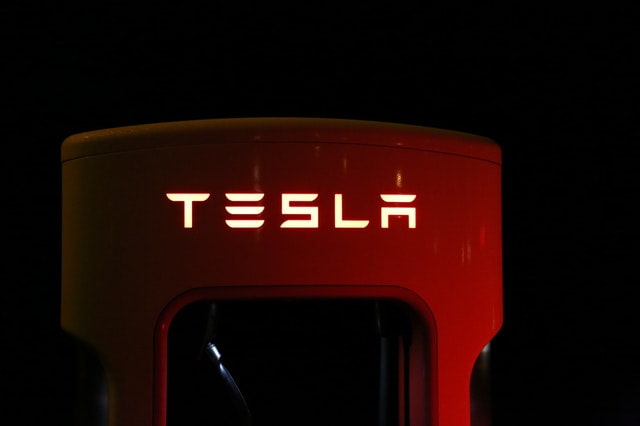Introduction
Tesla tries to maintain high standards of safety in every respect while developing its cars. Ranging from design and physical structure to security features, safety is a priority for them. Tesla cars come with several enhanced security features that can be easily activated by going to "Controls" > "Settings" > "Safety & Security" on the car’s touchscreen. Let us have a look at some of their major security features.
Main Security Features of Tesla Cars
Security alarm system:
A Tesla car possesses a very reliable security alarm system. As soon as any locked door or trunk is opened without a valid entry key, the alarm starts ringing and the exterior lights start flashing. To enable the alarm, go to “Controls” > “Settings” > “Safety & Security” > “Security Alarm” in your car’s touchscreen. Then exit your car, lock all the doors and take the key away from your car so that your car does not detect any recognized key in or near it. After 1 minute, the alarm will be activated. To stop the alarm, just press any button on your key fob.
PIN to Drive:
This is one of the best features to prevent car theft even when someone has your car key. It allows you to set a 4-digit verification PIN that must be entered in order to drive your car. To activate this feature, go to “Controls” > “Settings” > “Safety & Security” > “PIN to Drive” and enter your desired PIN code. If you forget your PIN, follow the above steps and tap the link at the bottom of the PIN tab. Then enter your login credentials and follow the on-screen instructions. Your PIN will be deactivated and you can enter a new PIN.
Sentry Mode:
Tesla cars have a unique feature called “Sentry Mode” that uses the car cameras to detect suspicious activities in the environment surrounding the car when it is parked and locked. When enabled, this mode can enter 3 states – “Standby”, “Alert” and “Alarm”, depending on the severity of the threat detected. It switches to the “Alarm” state when a severe threat is detected, such as breaking a window. In that case, the car cameras start recording, the alarm starts ringing and an alert is sent to the owners on their Tesla mobile app notifying them of the incident. Owners can also download the video recording of the incident. To enable Sentry Mode, go to “Controls” > “Settings” > “Safety & Security” > “Sentry Mode”. Sentry Mode can also be enabled via Voice Command or the Tesla app.
Passive Entry:
This feature gives the owners the option to automatically lock and unlock their car as they approach their car with the key within a specific range. To enable or disable Passive Entry, go to “Controls” > “Settings” > “Doors & Locks” > “Passive Entry”.
Intrusion sensors:
All Tesla cars are equipped with intrusion sensors inside them near the rearview mirror to monitor movement inside the cabin. These sensors occasionally transmit ultrasonic waves throughout the cabin and are quite sensitive to disturbances like intrusion and significant car movements. In case of such disturbances, the alarm will start ringing. This feature protects against certain break-in situations that are hard to catch otherwise.
Tilt sensor:
All Tesla cars are also equipped with a tilt sensor embedded into the intrusion sensor module to detect the tilting of the car. The alarm will ring if the car is tilted significantly. This helps to alert against situations involving lifting or tilting of the car, like when the car is put onto a trailer.
To turn the tilt and intrusion detection system on or off, go to “Controls” > “Settings” > “Safety & Security” > “Tilt/Intrusion”.
Recently, Guillaume André, founder of Ingenext, was successful in unlocking the 50 hp feature that Tesla sells for $2,000 in its “Acceleration Boost” upgrade for the Model 3 Dual Motor.
To do that, he first upgraded a Tesla Model 3 RWD to a Dual Motor AWD by hacking the software of the Model 3 driver inverter, which was configured for a single motor setup, to power both motors. Then he unlocked the 50 hp upgrade for the Dual Motor.
Along with the “Acceleration Boost” upgrade, Guillaume André was also able to upgrade the Tesla Model 3 Dual Motor to a full-on Model 3 Performance which has 100 more hp than the former, even though Tesla itself does not have any software upgrade for the same. He was thus able to upgrade a regular Tesla Model 3 with a 150 hp boost, significantly increasing its speed.
Tesla currently uses 80-bit encryption in its key fobs.
Earlier, Tesla key fobs were equipped with 40-bit encryption. In 2018, researchers from KU Leuven university in Belgium discovered that it was possible for hackers to easily clone a Tesla Model S key fob in just a few seconds with just some cheap, basic hardware. Tesla then started deploying 80-bit encryption for its key fobs. However, again the same researchers soon found a bug in this new encryption that would make cracking the encryption only twice as hard as cracking the previous one. Tesla responded by introducing the PIN to Drive feature which is not dependent on the security of the fob.
Conclusion
Taking all the above points into consideration, we can conclude that Tesla cars are quite very secure, though they are not perfect and require better security features in certain aspects. With consistent improvements in its software technology and better software updates, Tesla certainly has the potential to manufacture the most secure cars in the world.
